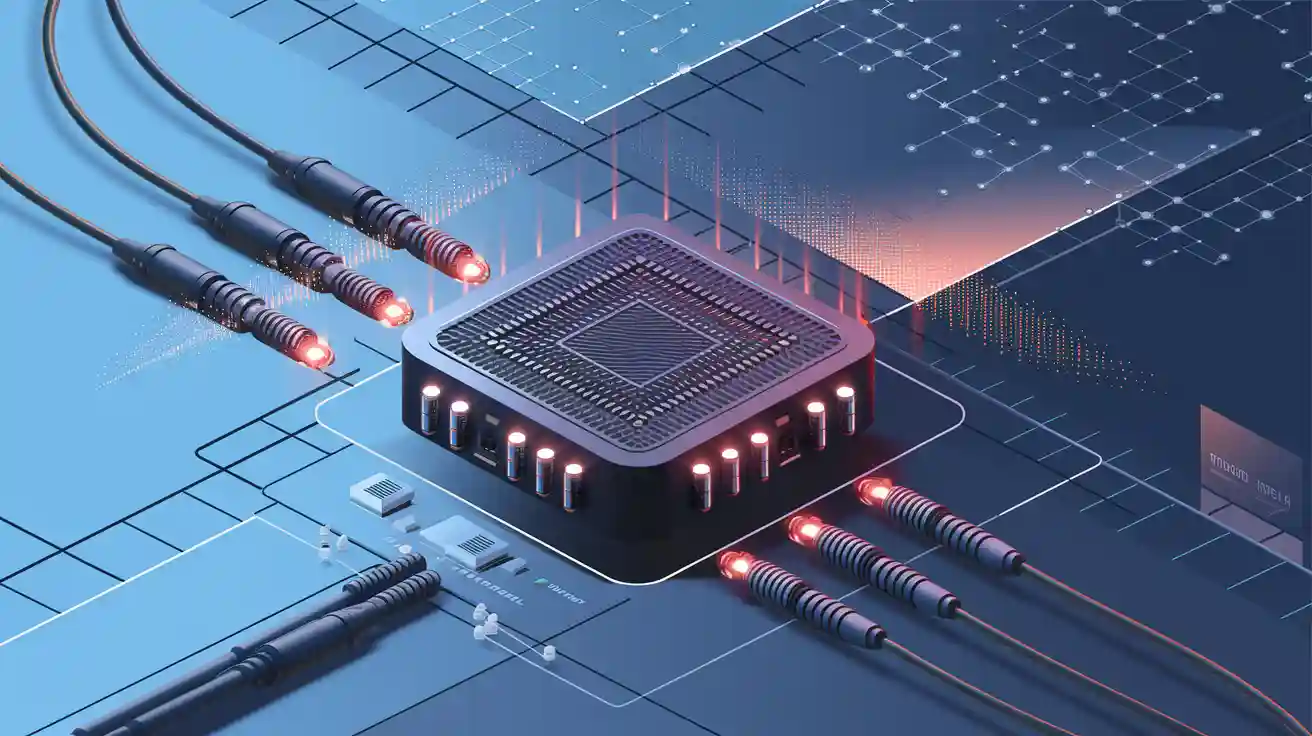
What Are Optical Modules?
Optical modules (also called optical transceivers) are critical components in fiber optic communication systems that convert electrical signals to optical signals and vice versa. These compact devices consist of optoelectronic components, functional circuits, and optical interfaces.
As a key enabler of high-speed data transmission, optical modules offer:
✔ High-speed connectivity (from 1G to 800G)
✔ Long-distance transmission with minimal signal loss
✔ Strong anti-interference (immune to EMI/RFI)
✔ Compact size & low power consumption
Leading manufacturers like LINK-PP Optical Transceivers provide reliable, high-performance modules for data centers, 5G networks, and telecom infrastructure.
How Optical Modules Work
🔹 Transmission Process (Tx)
Electrical signals from switches/routers are processed by a laser driver IC
A laser diode (VCSEL/DFB/EML) converts the signal into light pulses
Light is coupled into fiber optic cables via precision lenses
🔹 Reception Process (Rx)
Incoming light is detected by a photodiode (PIN/APD)
A transimpedance amplifier (TIA) converts light to electrical signals
A limiting amplifier restores signal integrity
Clean electrical signals are sent to host devices
📌 LINK-PP's advanced DSP technology enhances signal quality in 400G/800G modules for ultra-low latency.
Types of Optical Modules
1. By Data Rate
Type | Speed | Application |
|---|---|---|
SFP/SFP+ | 1G-25G | Enterprise networks |
QSFP28 | 100G | Data center interconnects |
OSFP/QSFP-DD | 400G-800G | AI/ML workloads |
2. By Form Factor
SFP/SFP+: Compact, hot-pluggable
QSFP+/QSFP28: High-density 40G/100G
QSFP-DD/OSFP: 400G+ for hyperscale DCs
3. By Fiber Mode
Type | Distance | Wavelength |
|---|---|---|
Multimode | ≤550m | 850nm (VCSEL) |
Single-mode | 10km-120km | 1310nm/1550nm |
4. By Transmission Distance
Short Reach (SR): ≤300m
Long Reach (LR): 10km-40km
Extended Reach (ER/ZR): 80km-120km
5. By Wavelength
850nm: Multimode (SR)
1310nm: Single-mode (LR)
1550nm: DWDM/ZR
CWDM/DWDM: Wavelength-division multiplexing

Key Advantages of Optical Modules
✔ Higher bandwidth than copper cables
✔ Lower latency for real-time applications
✔ Longer reach (up to 120km with coherent optics)
✔ EMI immunity for stable performance
✔ Hot-swappable for easy maintenance
Installation & Troubleshooting
✅ Proper Usage
Insert module into compatible switch port
Ensure fiber connector (LC/MPO) is clean and secure
Verify DDM parameters (Tx/Rx power, temperature)
🛠️ Common Issues & Fixes
Problem | Solution |
|---|---|
No link detected | Check compatibility & fiber polarity |
High BER (Bit Error Rate) | Clean connectors or replace fiber |
Overheating | Ensure proper airflow & thermal management |
💡 LINK-PP modules feature auto power adjustment to prevent signal degradation.
Future Trends in Optical Modules
✔ Co-Packaged Optics (CPO) for reduced power
✔ Linear Drive Pluggable Optics (LPO) for lower latency
✔ 1.6T modules with thin-film lithium niobate modulators
LINK-PP is at the forefront of next-gen optical solutions, driving innovation in AI data centers and 6G networks.
Why Choose LINK-PP Optical Transceivers?
🔹 100% MSA-compliant
🔹 Industry-leading 5-year warranty
🔹 Advanced DDM for real-time monitoring
🔹 Cost-effective 400G/800G solutions




